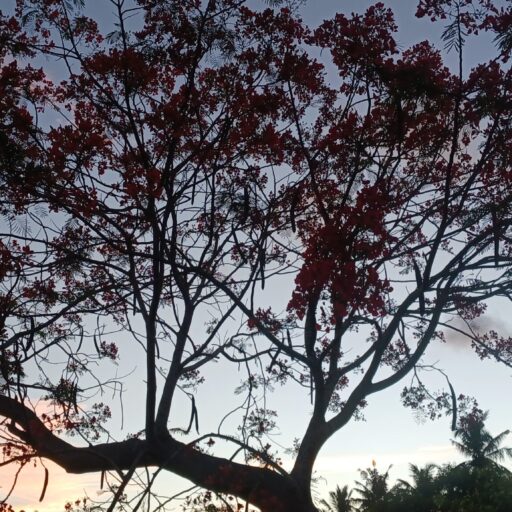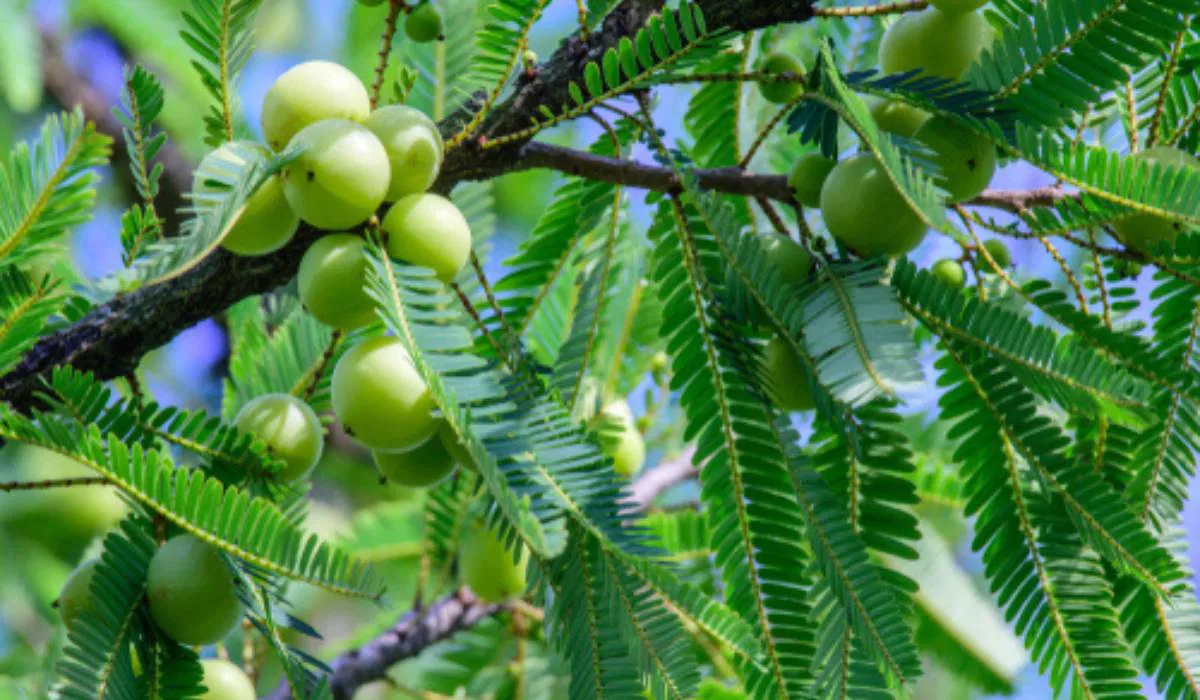Introduction
Amla is a small to medium size plant. It’s scientific name is Emblica officinalis. Amla, is arguably one of the most important plants in various traditional and folk systems of medicine in India. It grows in tropical regions therefore a warm, hot and humid climate is required. It is a common species of dry deciduous forest and extremely common throughout tropical and subtropical part of India. It is a light demander and sensitive to drought. A well-maintained tree lives up to 70years. The fruits are available from October till may during which time they are also collected and preserved in large number to be made available during the rest of the year.
Native
It is native to South-East-Asia. It is widely grown in Uttar Pradesh in Northen India. It is also cultivated in Tamil Nadu on a large scale.
Common name
Amla, emblic myrobalans, Amalaki, Nelli, Indian gooseberry,
Tree height
The tree is small to medium in size, reaching up to 8 m in height.
Stem
The branchlets are not glabrous or finely pubescent. it has grey bark and reddish wood.
Leaves
The leaves are simple, subsessile, and closely set along branchlets, light green, resembling pinnate leaves. Its leaves are feathery, linear oblong in shape, and smell like lemon.
Flower
The flowers are greenish yellow or pinkish. Its flowers are tiny, solitary, apetalous, auxiliary, pedicellate, monoecious. Its flower begins in Late winter/ early spring during the month of March-April.
Fruit
The fruit is nearly spherical, light greenish yellow, quite smooth, and hard on appearance, with six vertical stripes or furrows. Ripening in autumn, the berries are harvested by hand after climbing to upper branches bearing the fruits. Use long bamboo pole with hooks to pluck them. Normally the plant should start fruiting by 4-5years. The taste of Indian emblic is sour, bitter, and astringent, and it is quite fibrous. The fruit of Amla is rich in vitamin C (ascorbic acid) and contains several bioactive phytochemicals. It is ideal for harvesting fruits in February when they turn opaque and dull green, yellow from light green. The mature fruits are harder, and you can check by shaking them vigorously.
Seed
Cut open the fruit in half and remove the pit. Use a hammer or nutcracker to open the pit and bring out the red brown seeds. The fruit contain 1 or 2 tiny seeds. It is best to collect Amla seeds in the fall after the smooth, round fruit ripens and turn yellow green. You should wait until the skin loses its translucent nature and become opaque and dull. 1kg seeds counts in between 7000-8000nos.
Habitat
Amla is a very common plant in India. It can be easily found growing in semi-arid regions and plain of northern India. Uttar Pradesh, Tamil Nadu, Rajasthan, and Madhya Pradesh are preferable subtropical area for cultivation of amla.
Soil preference
Amla tree grown in moderate alkaline soils, well drained, loamy to light heavy soil that is deep and rich in organic matter. It has grown in slightly acidic to saline soils and may be grown in calcareous soils. It requires the pH of soil ranging from 6.5-9.5. Owing to its hardy nature it is grown in sort of soils. Avoid cultivation in heavy soils and purely sandy soils.
Watering
Amla plant with hardly require more water during monsoon. Young plants require watering during summer month at 15 days intervals till they need full established. Regular and abundant watering is essential at a young age till it grow to a height 5-6feet. Once the tree gets established, it will take care of its own.
Sun requirement
It grows best where it can get full sunlight for the most part of the day. Do not keep the plant in the shade as it will result in fewer small sized berries.
Planting
The young plant up to the age of 3years should be protected from hot wind during May- June and from frost during winter month. The matured plant can tolerate freezing temperature as well as high temperature up to 46 degrees centigrade.
Pruning
It is better to leave only 4-5 well shaped branches with the best angel at about 0.75m from the bottom level, other dead, diseased, weak crisscrossing branches and suckers should be pruned off at the top of December. Prune all dead, damaged, diseased branches or those entangled and crossing each other. This will improve the air flow and will ensure the sunlight reaches all parts.
Propagation
Amla is commonly propagated through seeds. The extracted seeds are given the float test and 100% of those that sink will germinate. It is better to put in cow dung slurry for 48 hours for speed up germination. Germination takes in between 20-40days, success rate 35-50%. In one kg seeds we get around 4000nos seedling. It does not store well and so is best sown as soon as it is ripe. Viability period of the seed is up to 1year.
Nursery
Take amla seeds. Make sure there is no flesh left. Dry the seeds for a minimum of 48 hour. After drying, soak the seeds in water for 24 hours. If you find any seeds floating up in water then remove them, these will not germinate. Seeds are sown during March in the raised mother beds having soil mixture of soil, sand and FYM (1:2:1) preferable using sandy loam soil seeds may be treated with fungicide (Bavistin) and soil mixture may be treated with insecticide like chlorpyriphos dust to prevent white ant attack. Seeds are normally sown so deep that the depth of the soil above it is not more than the minimum diameter of the seed. Shade should be provided in areas with hot climate mulching with hay and overhead shade should be provided to facilitate germination. Regulate water twice a day is to be followed. Seedlings are transplanted when 2 to 4cm in height to poly pot having soil mixture of soil, sand and FYM in a proportion of 1:1:1 and in each polythene bag the transplanted seedling shall be put at the center. The portion in soil mixture may be modified depending on the nature of the soil. Soil mixture may be treated with insecticide like chlorpyriphos to prevent white ant attack. Root cutting, grading, and resetting of poly pot seedling are done at regular interval of about 45 days. The poly pots are kept on polyethene sheet to prevent root penetration into soil. Seedling may be ready for planting during next July when the average height will be about 45cm
General Uses
Amla fruit is an important dietary agent and is used to make murabbah, burfi, ladu, fresh juice, pickle, chutneys, and curries in India. The fruits are used to prepare a black ink and a hair dye. it is a very good anioxidant that can prevent ageing and rejuvenate the cellular structure keeping it young and healthy for a long time.
Medicinal Uses
It is arguably the most important medicinal plant in the Indian traditional system of medicine for various ailments including diarrhea, jaundice, headaches, inflammation, and as a tonic. It is also one of the constituents of a popular Ayurvedic formulation, Triphala. All parts of the tree including the dried and fresh fruits, seeds, leaves, root bark, and flowers are used. The fruit pulp of an Amla contains 20 times more Vitamin C content than an orange. Studies done in the lab and in animals suggest that E. officinalis has antioxidant, antibacterial, liver protective, cardioprotective, antiulcer, antitumor, antidiabetic properties and viral aliments like cold cough. The berries of the tree are potently used for medicinal formulation due to their healing properties. The soluable fiber in amla berries dissolve in the body, which helps to slow the rate your body absorbs sugar.
- Small studies in humans show that it has antioxidant and lipid-lowering effects.
- E. officinalis has strong antioxidant effects and may therefore interfere with chemotherapy and radiation therapy.
- It has been shown to possess antioxidant, anti-inflammatory and anti-apoptotic effects.
- Very recent research published in 2015 observed the positive effect of neem leaves along with amla in the treatment of anemia. After treatment with neem leaves and amla, an increase in the blood parameters such as hemoglobin was observed. Before taking this as a substitute of medicine it is strictly advised to consult a Ayurvedic Doctor.
Toxicity
It considered safe when consumed in moderate amounts, excessive consumption may lead to toxicity.
Pests and Diseases
In diseases, it can be infected by rust. Pests like caterpillar, mealybugs or other general garden pests may infected it.
Chemical constituent
there are no major toxicities associated with its use.it is generally considered safe for consumption.
Classification
Kingdom:-Plantae Phylum:– Class:– Magnoliopsida Family:– Phyllanthaceae Genus:-Phyllanthus Species:-P.emblica

